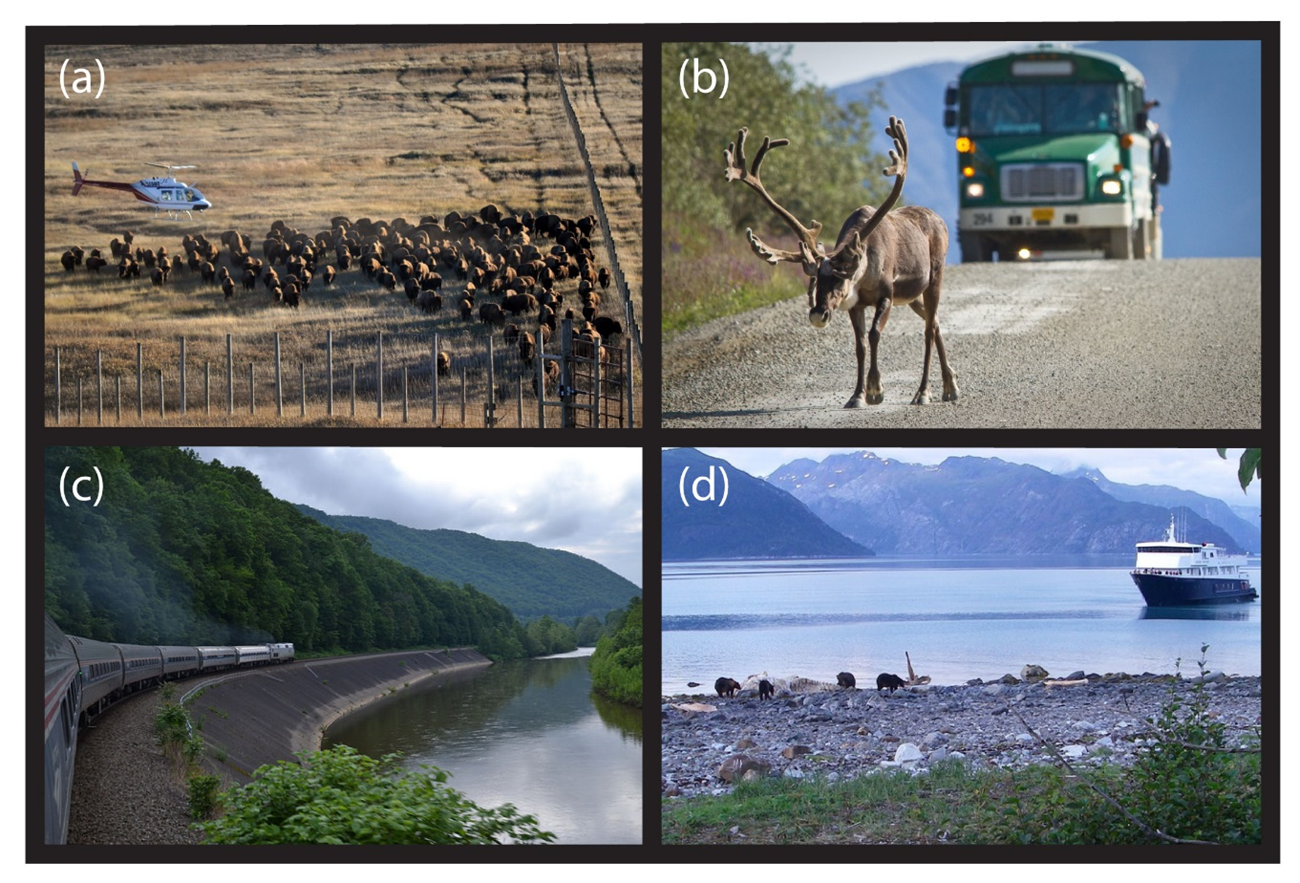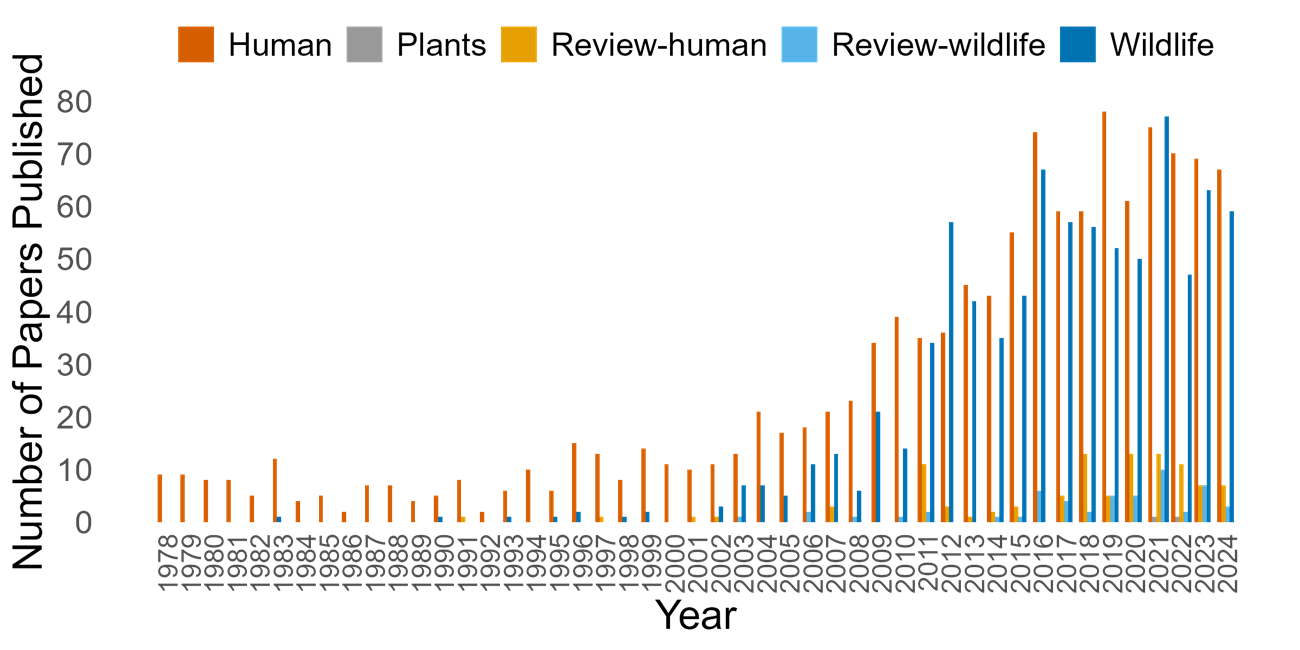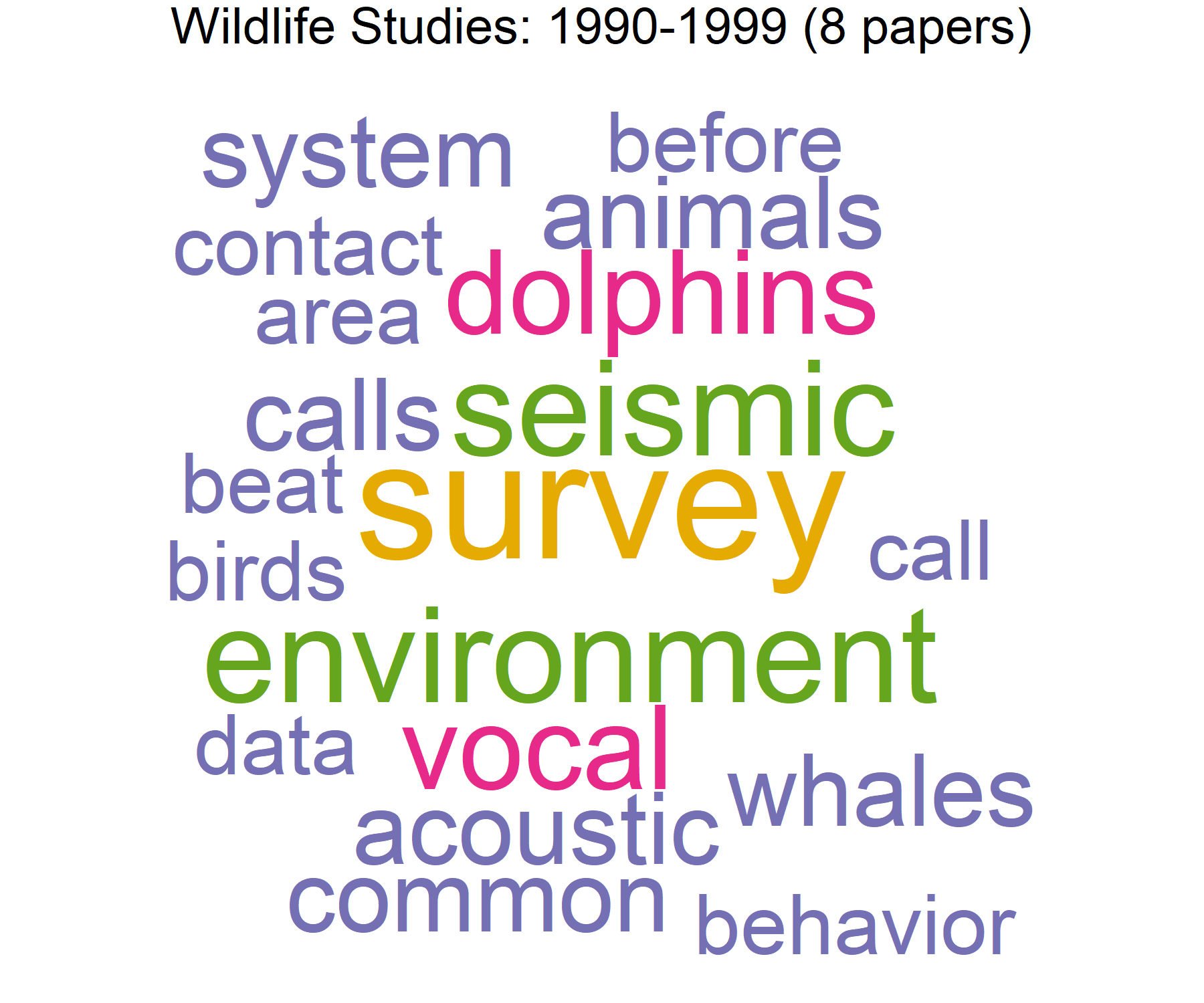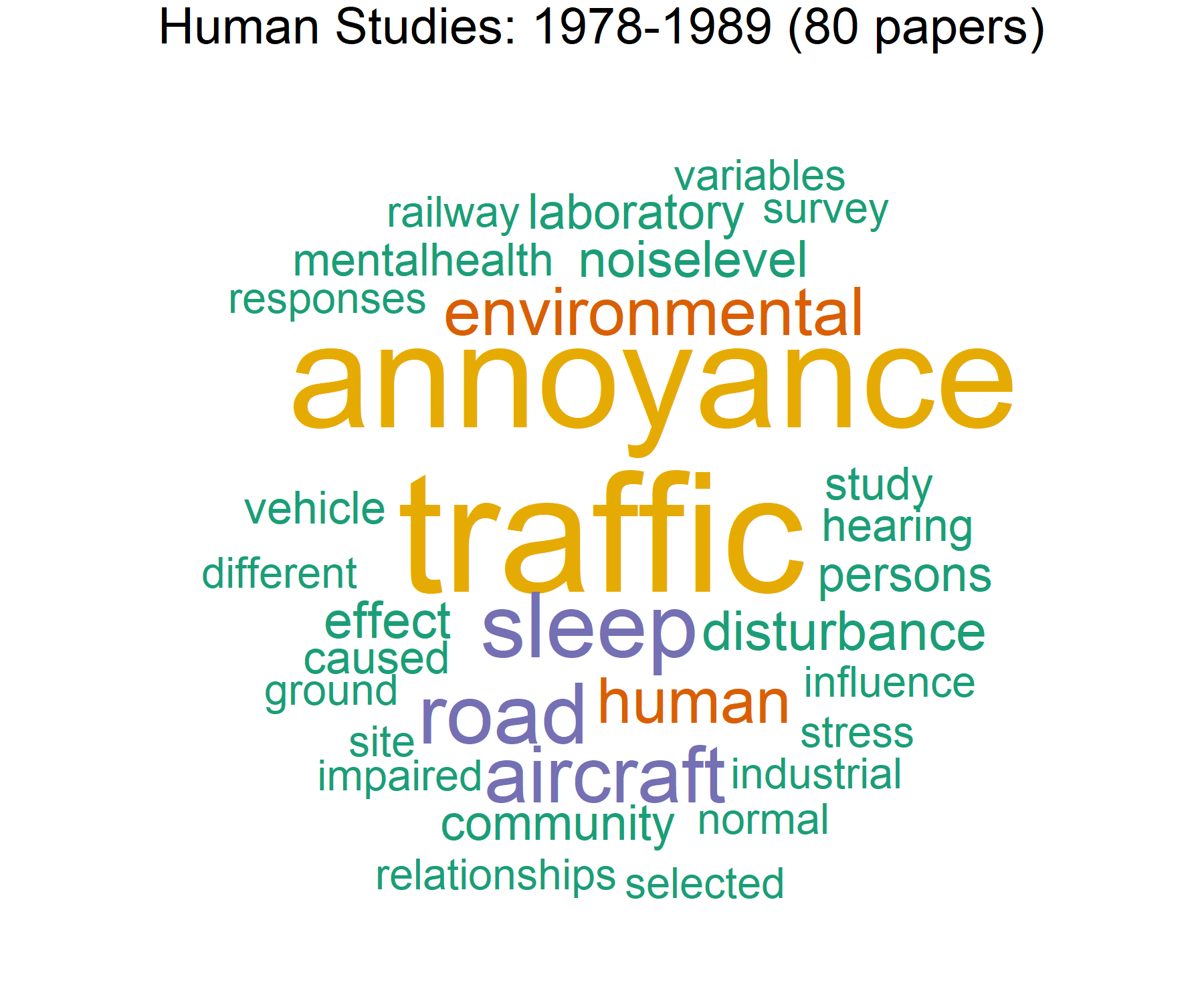Article
Synthesis of Studies on the Effects of Noise
1978-2024, with 2024 update
Project Summary
The Natural Sounds and Night Skies Division (NSNSD), within the Natural Resource Stewardship and Science Directorate (NRSS), develops, uses, and distributes the tools of natural and social science to help the National Park Service (NPS) fulfill its core mission: to protect park resources and values. As part of this, NSNSD strives to be aware of, understand, and communicate current scientific knowledge in our fields particularly as pertains to work that can help inform management of resources and the visitor experience. However, it can be challenging to stay abreast of scientific topics experiencing rapid growth in knowledge. This project addresses this challenge by conducting systematic, comprehensive, up-to-date queries and summaries of the scientific literature.
Noise arising from expansion of human population and infrastructure, transportation networks, and resource extraction alters conditions in public lands and protected areas, including national parks (Figure 1)1. In 2015, experts developed a comprehensive query to capture relevant literature on noise impacts to wildlife, which produced an authoritative literature synthesis2. That published synthesis offered an important peer-reviewed summary of the state of knowledge at the time. This project expands upon the 2015 effort by summarizing annual results from a systematic query of the literature. The intent is to provide park managers with an updated understanding of relevant scientific knowledge.
Notably, our approach is distinct from the results from an ad hoc query using Google Scholar or a related tool. We developed, tested, reviewed, and improved our query through an iterative process to ensure that the results encompass all the relevant literature. Though no tool can guarantee it will capture every relevant paper, our current process delivers results that are far more comprehensive than mere searches or less systematic queries.
This resource brief represents our continued attempt to concisely render knowledge of noise effects on wildlife and people in an accessible format. The project focuses on the size of the literature, the kinds of noise sources that were studied, and the breadth of effects that have been documented. We believe the value of this brief to NPS managers is to raise awareness of the extent of scientific support for park planning and management, and identification of distinct subsets of this literature that may be of special relevance for specific locations or management actions. The authors will assist parks and regions with more detailed and specific analyses of this literature upon request.

Finding Relevant Studies
In 2018, we established a key term-based search of peer-reviewed literature published beginning in 1978, using Thompson’s ISI Web of Science (WOS). We tested the results against an established list of relevant papers on the effects of noise, capturing 90% of known studies using our search criteria.
Since then, we have conducted yearly literature searches following the same protocol, up to and including 2024. A subject matter expert reviews all papers identified by the search, to ensure that we include only studies documenting the ecological or health effects of noise in the final data set (N = 2329 relevant studies from 1978 to 2024). Irrelevant papers include those that summarize noise levels without documenting a response, and studies that occur inside hospitals and vehicles (indoor learning spaces are included, due to relevance for park interpretation). For papers deemed relevant, the subject matter expert labels each paper with a noise source category (e.g., transportation) and effect category (e.g., human, wildlife) (Figure 2). Additionally, we use automated searches to identify key words that appear in publication titles (e.g., sleep, annoyance, birds).
Number of Studies 1978-2024

Sources of Anthropogenic Noise 1978-2024
A subject matter expert labeled all relevant papers with a single category of noise source: noise from built environment (all sources together), recreation, transportation, resource extraction (which included industrial sources), or military (Figure 3). Most of the human studies are focused on transportation noise, while a large proportion of wildlife studies are focused on noise from the built environment. The “other” category reflects several studies on noise impacts from unmanned aerial vehicles (UAVs) (i.e., drones), with unspecified origin (i.e., military, recreation). There was 1 study on UAV noise impacts in 2020, and several more in 2021. 2021 and 2022 each produced a study on the impacts of anthropogenic noise on plants; previously, this literature had been sparse but may require attention in future years with growth in understanding of noise impacts to plants.

Keyword Trends from 1978 to 2024
From 1978-2024, there were 1312 studies on humans (101 of which were reviews), and 896 studies on wildlife (53 of which were reviews).
In the 1312 studies on human response to noise, article titles contained the following keywords:
- 474 on traffic
- 216 on aircraft noise
- 299 on annoyance
- 75 on wind farm noise
- 164 on sleep
- 50 on industrial noise
- 39 on hypertension
- 19 on speech
- 9 studies in parks or protected areas
- 104 on traffic noise
- 39 on underwater sonar
- 19 on chronic noise
- 12 on aircraft noise
- 10 studies in parks or protected areas

Trends in topics 1978-2024
To examine different topics discussed in the literature, we generated word clouds for wildlife and human studies from the titles and abstracts for all publications (1978-2024).

2024 Update
The search for publications in 2024 produced 148 papers deemed relevant by a subject matter expert. There were 74 new studies on humans (7 of which were reviews), and 62 new studies on wildlife (3 of which were reviews). Additional studies were laboratory studies, which are not described in this summary.In the 74 studies on human response to noise, article titles contained the following keywords:
- 21 on traffic
- 7 on aircraft noise
- 7 on annoyance
- 0 on wind farm noise
- 5 on sleep
- 2 on industrial noise
- 2 on hypertension
- 0 on speech
- 0 studies in parks or protected areas
- 6 on traffic noise
- 2 on underwater sonar
- 1 on chronic noise
- 2 on aircraft noise
- 0 studies in parks or protected areas
